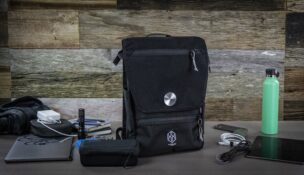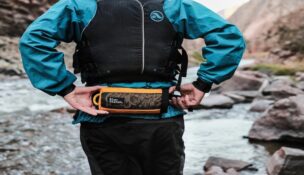Exploring the Riches of Colorado’s Wine Country: A Journey Through Vineyards and Vintages
Inside Colorado's wine renaissance and its scenic vineyards.
Jamie Siebrase //April 9, 2024//


Exploring the Riches of Colorado’s Wine Country: A Journey Through Vineyards and Vintages
Inside Colorado's wine renaissance and its scenic vineyards.
Jamie Siebrase //April 9, 2024//
Perched above the Colorado River, surrounded by Palisade’s prized peach orchards, you’ll discover Restoration Vineyards, where co-owners Linda and Gary Brauns grow six varieties of grapes across 10 acres opening to stellar views of the Book Cliffs. Nestled in the vines there’s a winery, tasting room and expansive lawn — the perfect place to watch the sunset while sipping Sauvignon Blanc, or maybe a glass of Barbera, their flagship red.
It’s not Napa, but that’s a plus for tourists demanding a novel wine-tasting experience. Colorado’s arid landscape offers an incredible setting for wine lovers, says Kevin Webber, CEO of Carboy Winery, Colorado’s largest sparkling facility.
Attesting to the area’s natural beauty, USA Today named Carboy’s Palisade tasting room (one of four the company runs statewide) the sixth-best wine-tasting room in the country in 2023.
Beyond the landscape, a uniquely Colorado experience enhances local vino. Many area wineries, Restoration and Carboy included, incorporate all elements of winemaking into the customer experience, from growing and harvesting to processing, aging, production — and tasting, of course. “We include hands-on learning as much as possible,” adds Linda Brauns.
Technically, craft beer has never been the state’s only local pour. Colorado’s wine-production industry dates back to 1890, when former Colorado Governor George A. Crawford planted 60 acres of wine grapes near Palisade. The industry didn’t really take off, though, until the following century, with legislation in 1977 and 1990 permitting small farm wineries and establishing the Colorado Wine Industry Development Board, respectively.
READ: A Colorado State of Wine
John Garlich and Ulla Merz, co-owners of Bookcliff Farms, came to the scene in 1996 and have seen the development of Colorado’s wine industry firsthand. From a handful of wineries in the 1990s, the industry has grown to include more than 170 licensed wineries, including 25 cideries and 16 meaderies, plus a sake producer, according to the Colorado Wine Industry Development Board, which is housed under the Colorado Department of Agriculture.
Last year, Garlich and Merz sold the winemaking portion of their business, Bookcli Vineyards, with tasting rooms in Palisade and Boulder, but they’ve continued farming on the Western Slope.
“In the beginning, enthusiasm carried us,” Merz says, thinking back to the 1990s, recalling a tight-knit group of dentists, geologists and engineers (like Garlich) who’d been pulled to the region by a common passion. “We’ve since attracted business-oriented professionals and trained winemakers,” Merz adds.
Fresh blood led to an increase in quality. Wine Enthusiast recently reviewed 21 Colorado wines that received an average score of 88.2. Seven wines received 90 points or higher, including BookCli Vineyards’ 2019 Reserve Merlot (91 points) and Carboy Winery’s 2019 Malbec (90 points). Winery at Holy Cross Abbey in Cañon City raked in several 90-plus scores. “We’ve made huge strides in classic wines,” says Merz, noting, “The industry here is very receptive to innovation.”
Maybe it’s the trifecta of passion, quality and innovation that explains how Colorado has managed to climb the ranks as a top wine destination. Hu Post listed the Grand Valley as a top U.S. wine destination; the inflight magazine Hemispheres dubbed Palisade a wine region to watch; Wine Enthusiast named The Infinite Monkey Theorem one of the best urban wineries in the U.S.; and Forbes noted the economic growth the wine industry has brought to Colorado.
Colorado grapes hold their own secrets.
It’s the combination of climate, soil and the environment that makes any wine special, explains Horst Caspari, state viticulturist and professor at CSU’s Western Colorado Research Center. “The place a wine is from has a certain expression that can’t be copied anywhere else,” Horst says.
In Colorado, a drier, mild-temperature climate paves the way for one-of-a-kind grapes.
“It’s a misconception that Colorado is a cold-climate grape-growing region,” Jayme Henderson says. She and her husband Steve Steese co-own The Storm Cellar, a boutique winery in Hotchkiss. (In case you’re curious, Henderson clarifies, “The challenges our region experiences surround our compact grape-growing season. We struggle, at times, to get our grapes ripe in time.”)
Mountainous terrain, Henderson continues, channels wind to deliver a warming effect. Local grapes also benefit from drastic diurnal temperature swings that preserve acidity within the grapes, leading to flavorful wines that are crisp and refreshing.
Speaking of acidity, Colorado’s soils are generally more alkaline than the acidic soils of California. Local Merlots might taste like Bordeaux, and Colorado Syrahs can seem closer to Rhône Valley reds than Australian Shiraz. Suffice to say, Centennial State wines taste uniquely Colorado.
Local grape growing regions range in elevation from 4,000 to 7,000 feet, making them the highest in the northern hemisphere.
In addition to elevation, Colorado has sunshine — plenty of it. “The region’s UV intensity produces smaller berries with thicker skins,” Steese says, adding, “The growing season is short, but intense.”
“The trend we are seeing on the growing side is more traditional, cold hearty cultivars that tend to be a crossover of European cultivars,” Horst adds.
Colorado’s nascent wine industry is having a modest yet meaningful economic impact.
According to a 2017 national study conducted by WineAmerica, Colorado’s wine industry contributes more than $300 million to the state’s economy, with the impacts of wine tourism activities on the Front Range and the Western Slope accounting for more than half of the total economic impact.
In 2021, the Colorado Wine Industry Development Board published its own economic impact study, finding that tourism accounts for 25 percent of the wine industry’s economic impact. The same 2021 study showed Colorado’s wine industry contributed less to the state’s overall economy, just $162 million. That last figure seems low to Kyle Schlachter, executive director for the Colorado Wine Industry Development Board.
“Despite the differences in numbers, tourism is an important part of our industry,” he says. The industry has sustained an average annual growth rate of well beyond 10 percent over the last two decades, the WineAmerica study showed.
Wine tourism really took off in Colorado during the pandemic, particularly during lockdowns. “People couldn’t travel and were looking for unique experiences,” Garlich recalls. Webber, too, has noticed “a huge uptick in visitors in Palisade and the Grand Junction area.”
Where should I go to sample Colorado wine?
If you haven’t visited the Western Slope in a while, now’s the time.
“In Colorado, we have two federally designated AVAs (American Viticultural Areas), the Grand Valley and the West Elks,” Schlachter explains. From Palisade to Grand Junction, Grand Valley vineyards make up roughly 85 percent of Colorado’s share. Meanwhile, the West Elks, found along the North Fork of the Gunnison River between Paonia and Hotchkiss, add another 10 percent.
“Everyone says the West Elks is a hidden gem. Um, no, we’re just a gem,” Steese says.
Wine grapes have also taken root in Montezuma, Fremont, Boulder, Larimer, Delta and Montrose counties. Local wineries offer seated tastings, wine-paired dinners, wine trails and live summer concerts. But if you’re looking to broaden your reach, consider one of several large festivals, which have been major drivers of Colorado wine tourism.
Recognized by USA Today as the Best Wine Festival in the U.S., Colorado Mountain Winefest is the big shebang, taking place in Palisade over the third weekend of September. This year’s event is scheduled for Saturday, Sept. 21, and is expected to attract thousands of visitors to the region.
But first, kick things off at Barrel into Spring — April 19 to 20 and May 10 to 11 — a Grand Valley tradition featuring self-guided tours or seven wineries plus barrel tastings and food pairings. Also in May, the Brauns family collaborates with several Palisade wineries to deliver Sip into Spring, a late-spring festival on Saturday, May 4.
Closer to Denver, Carboy Winery offers Rosé La La La on Friday, June 7, a celebration of Colorado rosé wines. The main event in Hotchkiss is North Fork Uncorked, scheduled for the first weekend in June, when wineries and cideries kick off their spring releases.
The Colorado Wine Industry Development Board hosts its annual Colorado Governor’s Cup Competition, bringing in world-renowned wine experts to evaluate a variety of Colorado wines, some of which will be showcased at a signature November tasting event, Colorado UnCOrked.
The Colorado wine industry might be relatively small compared to other wine-producing regions, but it’s poised to become an increasingly important part of the state’s economy and tourism industry. “Our business is primarily direct-to-consumer,” Linda Brauns says. One of the best ways to support local wine, then, is to visit a farm or vineyard.
We’ll raise a glass to that.

























